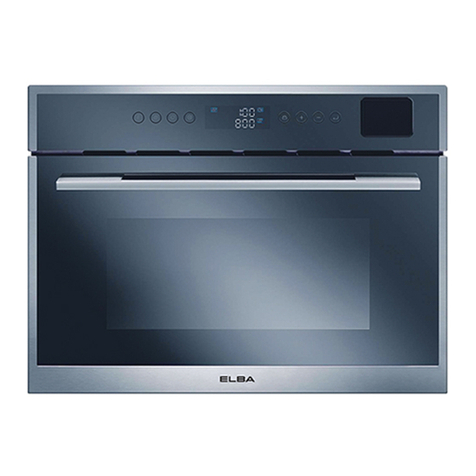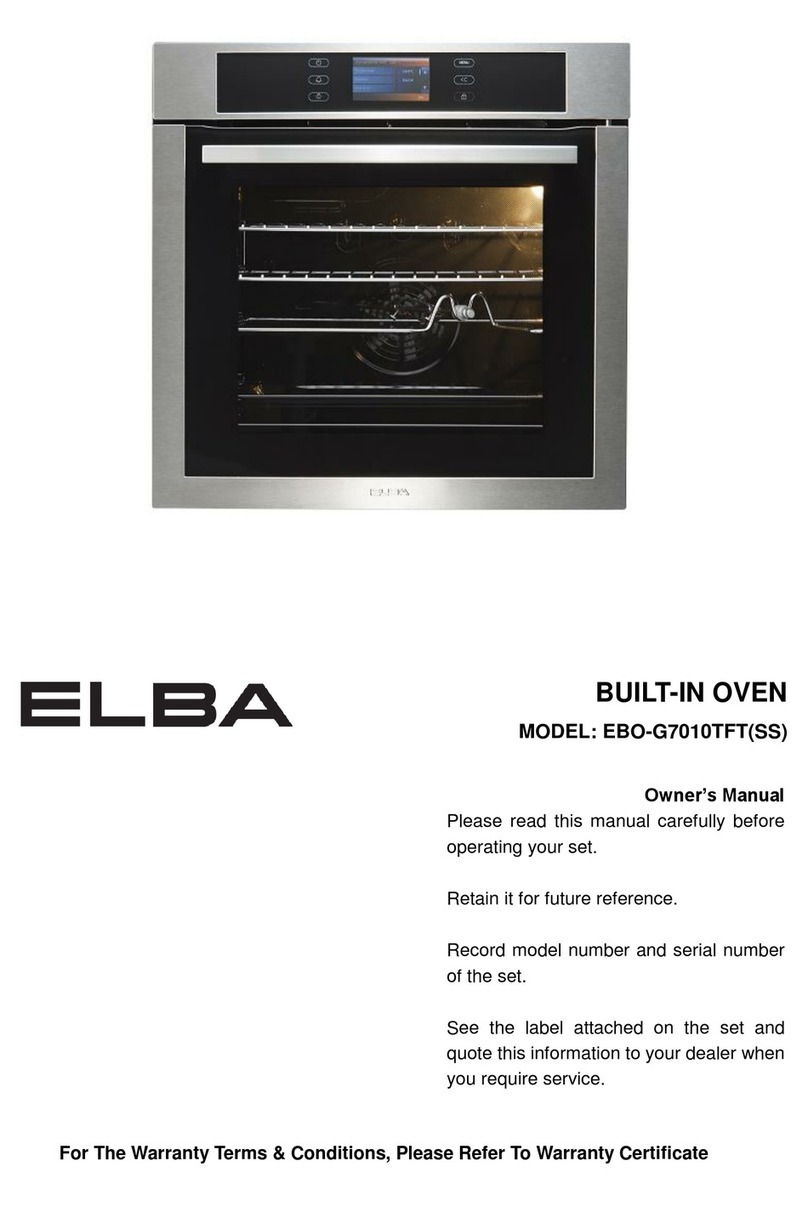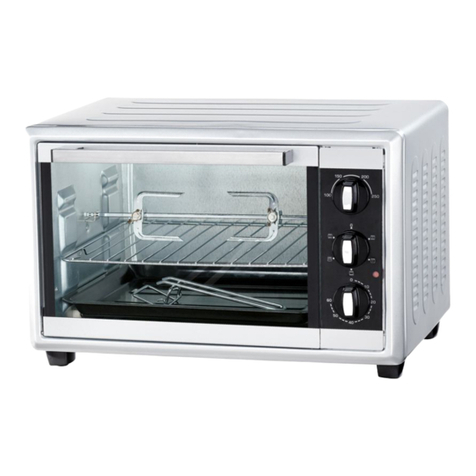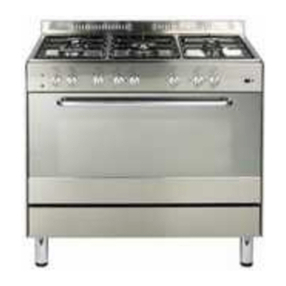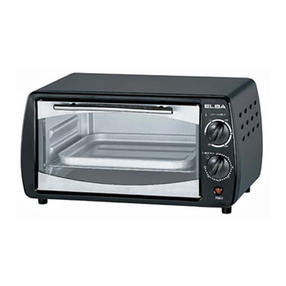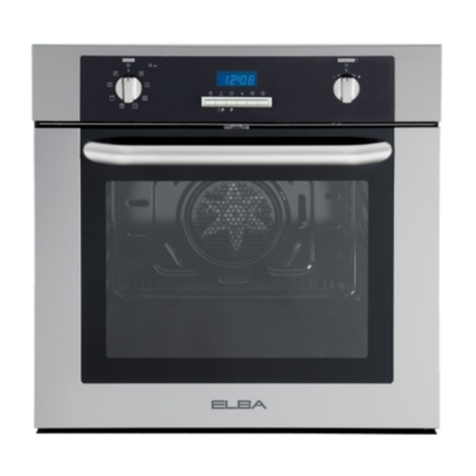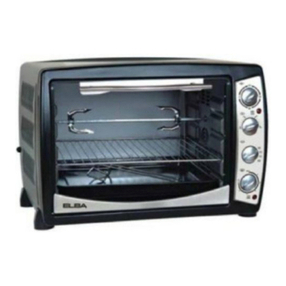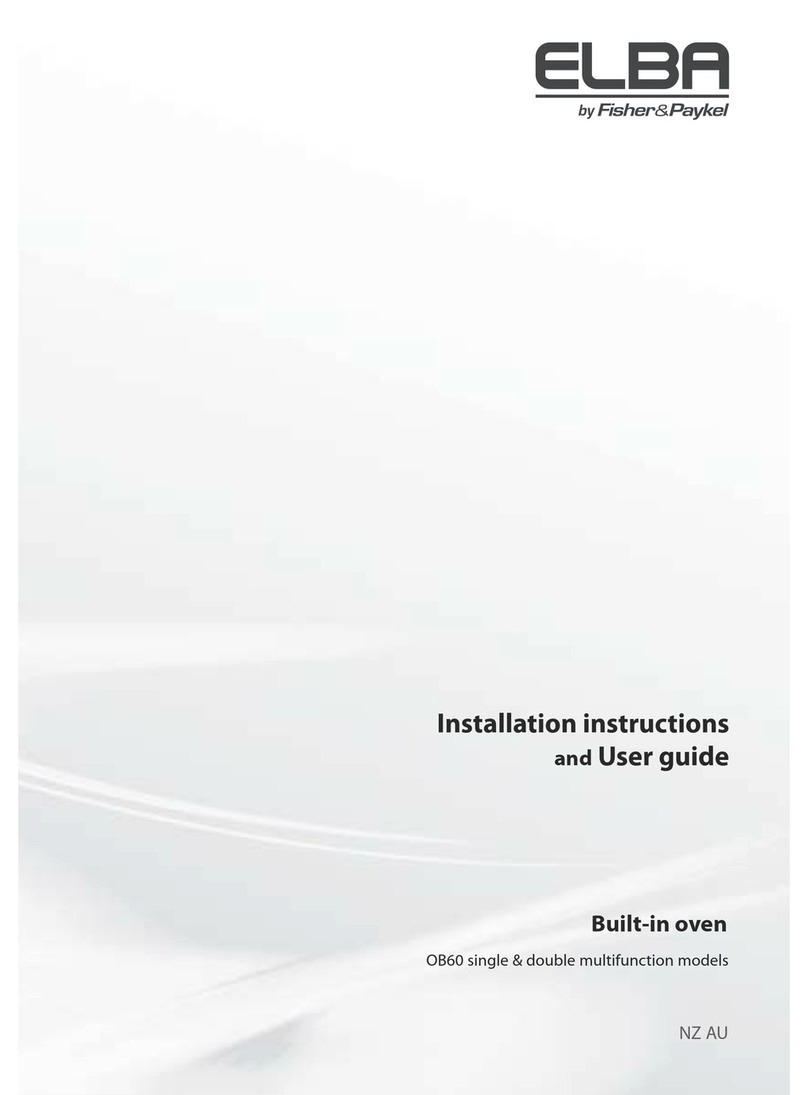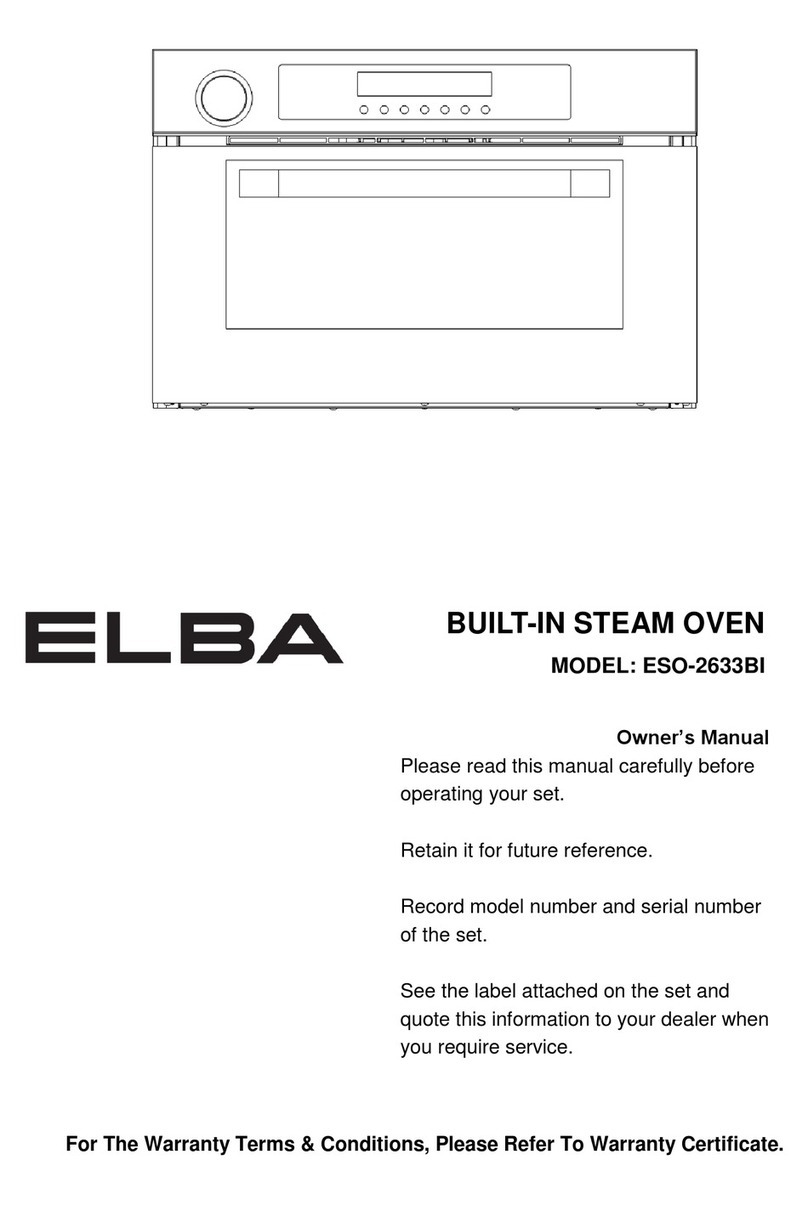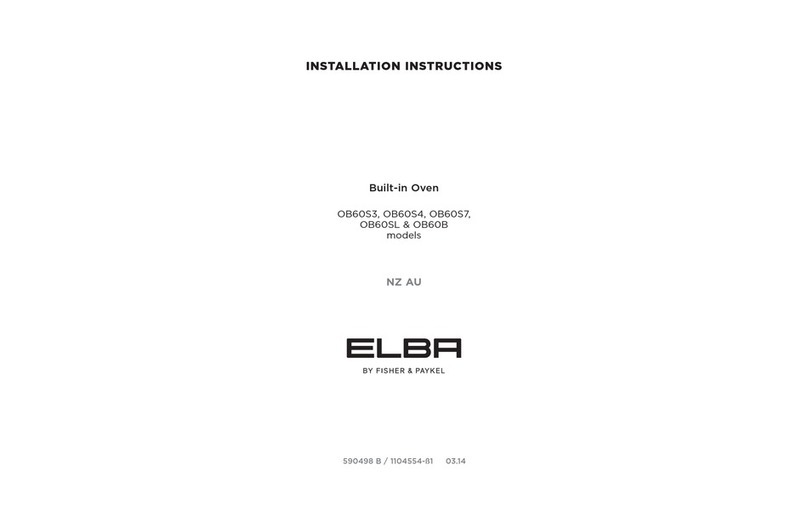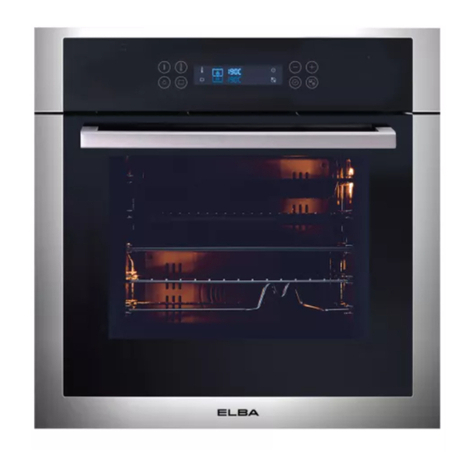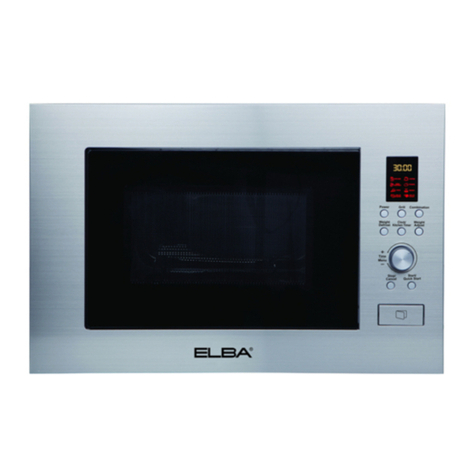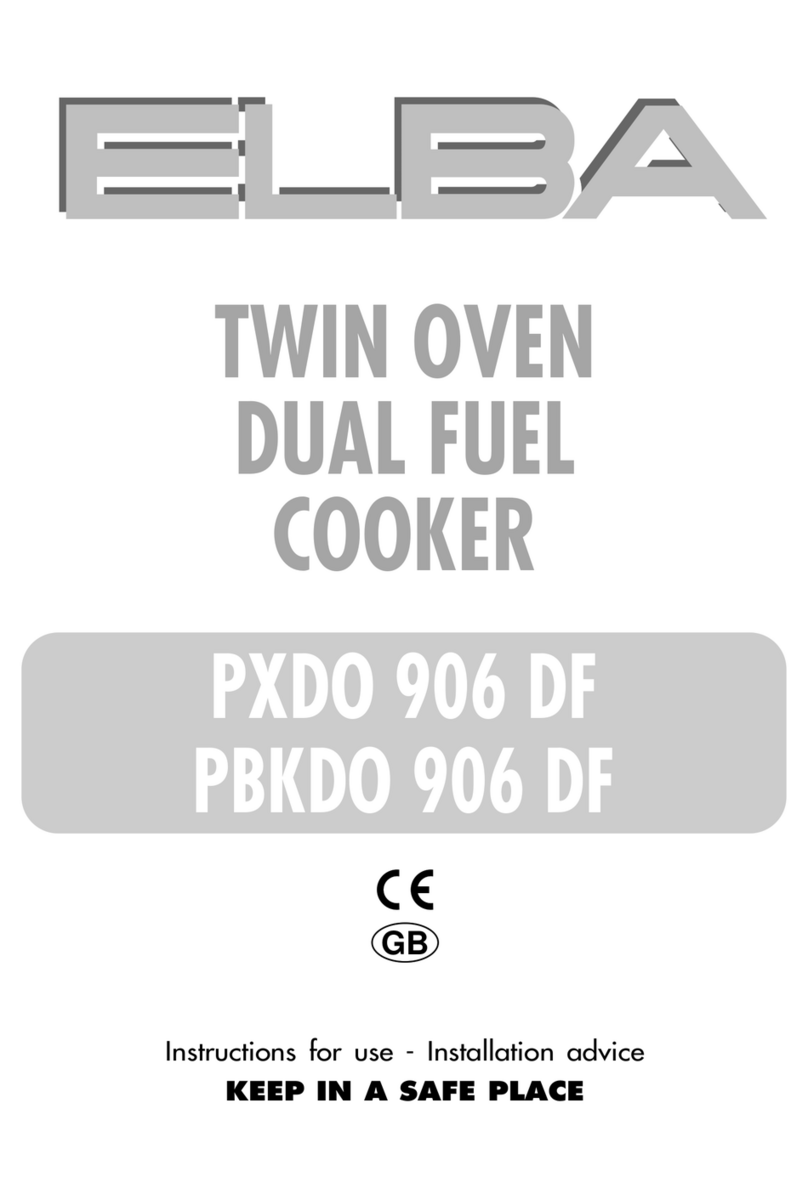4
FIRST USE OF THE OVEN
It is advised to follow these instructions:
• Furnish the interior of the ovens as described at chapter “Cleaning and maintenance”.
• Switch on the empty ovens on max to eliminate grease from the heating elements.
• Let the ovens cool down and clean the interior of the ovens with a cloth soaked in
water and neutral detergent, then dry carefully.
IMPORTANT PRECAUTIONS AND RECOMMENDATIONS
After having unpacked the appliance, check to ensure that it is not damaged and that the
oven doors close correctly. In case of doubt, do not use it and consult your supplier or a
professionallyqualiedtechnician.
Packing elements (i.e. plastic bags, polystyrene foam, nails, packing straps, etc.) should
not be left around within easy reach of children, as these may cause serious injuries.
• Do not attempt to modify the technical characteristics of the appliance as this may
cause danger to users.
• Do not carry out cleaning or maintenance operations on the appliance without having
previously disconnected it from the electric power supply.
• Do not touch the appliance with wet or damp hands (or feet).
• Do not use the appliance whilst in bare feet.
• If you should decide not to use this appliance any longer (or decide to substitute ano-
ther model), before disposing of it, it is recommended that it be made inoperative in an
appropriate manner in accordance to health and environmental protection regulations,
ensuring in particular that all potentially hazardous parts be made harmless, especially
in relation to children who could play with unused appliances.
• After use, ensure that the knobs are in the off position.
• Household appliances are not intended to be played with by children.
• Keep children away from the cooker during use.
• Children, or persons with a disability which limits their ability to use the appliance,
should have a responsible person to instruct them in its use. The instructor should
be satised that they can use the appliance without danger to themselves or their
surroundings.
• During and after use of the appliance, certain parts will become very hot. Do not touch
hot parts. Care should be taken to avoid touching heating elements inside the oven.
• Someappliancesaresuppliedwithaprotectivelmonsteelandaluminiumparts.
This lm must be removed before using the appliance.
• WARNING: When correctly installed, your product meets all safety requirements laid
down for this type of product category. However special care should be taken around
the rear or the underneath of the appliance as these areas are not designed or inten-
ded to be touched and may contain sharp or rough edges, that may cause injury.
• Fire risk!Donotstoreammablematerialintheovensorinthestoragecompartment.
• Make sure that electrical cables connecting other appliances in the proximity of the
cooker cannot come into contact with the hob or become entrapped in the oven doors.
